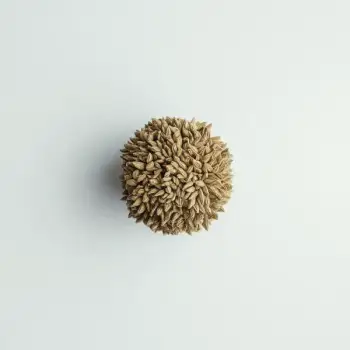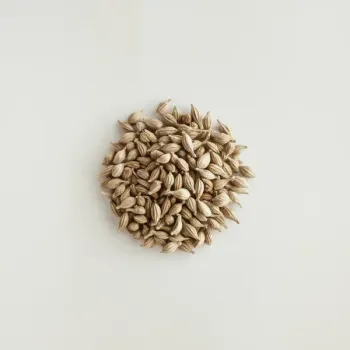Cumin and Caraway Seeds are distinct spices used in cooking. Cumin has a warm, earthy taste ideal for curries and meat rubs, while Caraway offers a sweet, peppery flavor with anise notes, often used in European breads and stews. They are not typically interchangeable due to their unique flavors.

Cumin is a warm, earthy spice commonly used in a variety of global cuisines. It's often found in the form of whole seeds or ground powder and is a staple in dishes such as curries, stews, and spice blends like taco seasoning and garam masala.

Caraway seeds are known for their slightly sweet and peppery flavor with a hint of anise. These seeds are popular in European cooking, particularly in breads, sauerkraut, and as a component in spice blends like harissa.
Cumin seeds have a robust, earthy flavor with a bit of bitterness, while caraway seeds are more aromatic with a slight licorice note. Cumin seeds are smoother, whereas caraway seeds have ridges. Cumin is primarily grown in India and the Middle East, whereas caraway is more common in Europe and Western Asia.

Your ultimate Recipe Box, Meal Planner, and Cooking Class all in one
In bread baking, cumin can be used to create a warm, spicy note. It's particularly good in flatbreads or naan, where its earthiness complements the charred dough. Caraway seeds are traditionally used in rye breads, providing a sharp contrast to the rich bread. Their unique flavor is a classic choice for this type of baking.
Cumin is a favorite for meat rubs, especially with beef or lamb. Its bold flavor pairs well with the savoriness of meat, enhancing dishes like chili, kebabs, and grilled steaks. Caraway seeds are often used with pork and sausages. They add depth to sauerkraut and are a key flavor in traditional European meat stews.
Cumin's warm flavor is a great addition to lentil soups, vegetable stews, and bean dishes. It works particularly well in Middle Eastern and Indian vegetarian recipes. Caraway seeds bring a unique taste to roasted vegetables, potato dishes, and creamy soups. It's an excellent way to add complexity to vegetarian cuisine.
Cumin and caraway are not usually interchangeable due to their different flavor profiles. However, in small amounts or in complex spice blends, they may be substituted for each other with an expected change in taste.
It’s not recommended as they have different flavor profiles. Cumin is a staple spice in chili for its warm, earthy taste, while caraway has a sharper, anise-like flavor.
Anise seeds can be used as a substitute for caraway seeds in rye bread to achieve a similar licorice flavor.
Both cumin and caraway are traditionally known for their digestive properties. Cumin is often used to aid in digestion, whereas caraway can help relieve digestive issues like bloating.
No, cumin and caraway come from different plants. They are from the same botanical family, Apiaceae, but are not the same species.